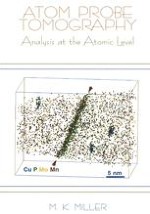2000 | Buch
Über dieses Buch
The microanalytical technique of atom probe tomography (APT) permits the spatial coordinates and elemental identities of the individual atoms within a small volume to be determined with near atomic resolution. Therefore, atom probe tomography provides a technique for acquiring atomic resolution three dimensional images of the solute distribution within the microstructures of materials. This monograph is designed to provide researchers and students the necessary information to plan and experimentally conduct an atom probe tomography experiment. The techniques required to visualize and to analyze the resulting three-dimensional data are also described. The monograph is organized into chapters each covering a specific aspect of the technique. The development of this powerful microanalytical technique from the origins offield ion microscopy in 1951, through the first three-dimensional atom probe prototype built in 1986 to today's commercial state-of-the-art three dimensional atom probe is documented in chapter 1. A general introduction to atom probe tomography is also presented in chapter 1. The various methods to fabricate suitable needle-shaped specimens are presented in chapter 2. The procedure to form field ion images of the needle-shaped specimen is described in chapter 3. In addition, the appearance of microstructural features and the information that may be estimated from field ion microscopy are summarized. A brief account of the theoretical basis for processes of field ionization and field evaporation is also included.
Anzeige
